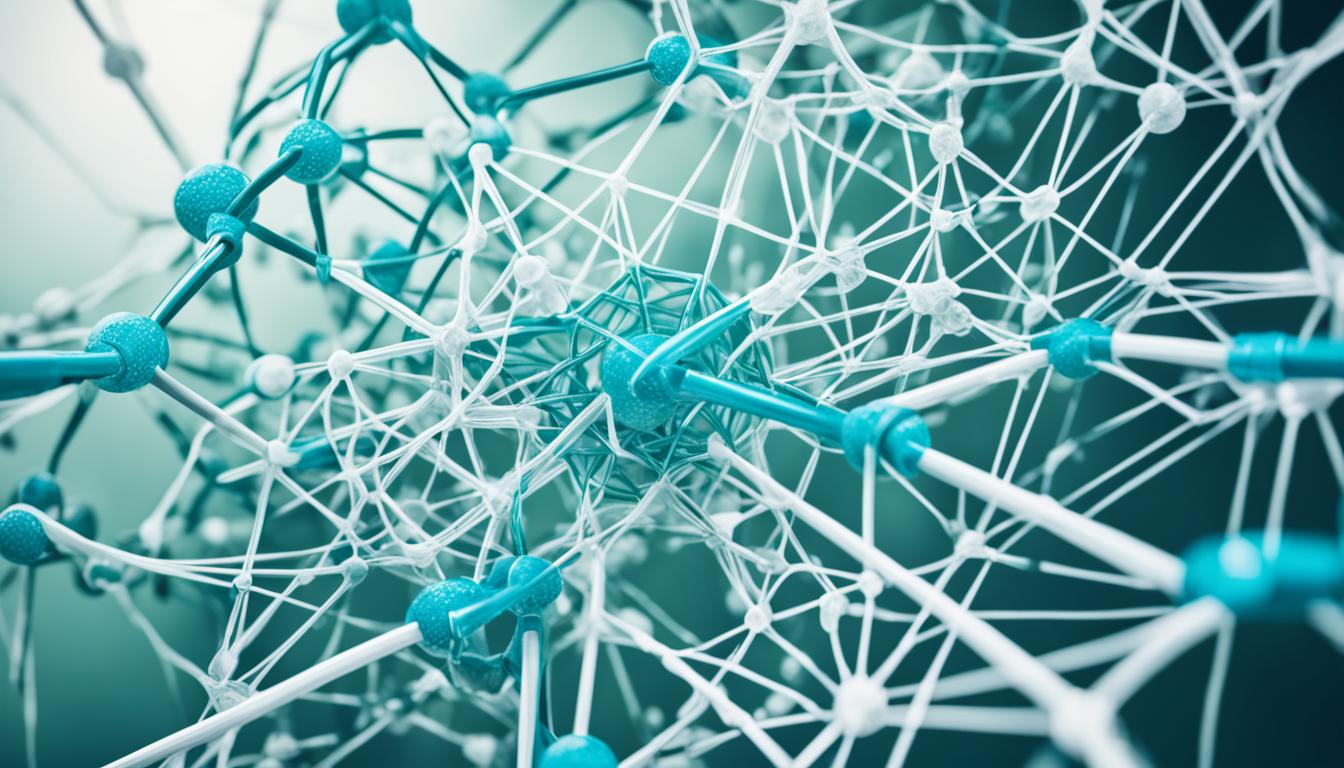Inherited metabolic disorders change how our body handles energy from food. They can cause big health problems if not treated. These disorders, like diabetes mellitus or obesity, mess up different parts of the body’s metabolism. The reasons can be genetic, because of the environment, or from our lifestyle. Things like bad genes and a poor diet play a big role.
The signs of these disorders can be different but might include feeling really thirsty, changes in weight, always feeling tired, belly pain, and women having strange periods. Finding out if someone has these disorders means checking them over, testing their blood, and maybe even doing some scans. By now, the usual ways to help with these disorders mean changing how we live, taking medicine, getting enzymes replaced, or having operations. But, using stem cells to treat these problems looks promising. It might give patients better lives.
Key Takeaways:
- Inherited metabolic disorders are genetic disorders that impact the body’s ability to process energy from food.
- Common symptoms include excessive thirst and urination, weight changes, fatigue, abdominal pain, and irregular menstrual cycles.
- Diagnosis involves physical examinations, blood tests, and imaging studies.
- Traditional treatments include lifestyle changes, medications, enzyme replacement therapy, and surgery.
- Stem cell therapy shows promise as a new approach for treating inherited metabolic disorders, offering potential for improved outcomes.
Common Types of Inherited Metabolic Disorders
Inherited metabolic disorders are genetic issues that can affect anyone from when they’re born till they are grown up. They happen because the body doesn’t have enough of the right enzymes or has trouble using them. This affects how the body breaks down food to make energy. Some known disorders are:
X-Linked Adrenoleukodystrophy (X-ALD)
X-ALD mainly affects boys and makes it hard for the body to break down certain fats. Extra fatty acids build up in the brain and spine. This leads to nerve damage and problems with how the brain works over time.
Metachromatic Leukodystrophy (MLD)
MLD is due to not having enough of an enzyme called arylsulfatase A. A certain fatty substance called sulfatide builds up, which harms the cover of nerve cells, myelin. Then, the nerves can’t work well, causing many symptoms.
Hurler Syndrome (Mucopolysaccharidosis Type 1)
Hurler Syndrome results from the body lacking or not having enough of an enzyme to break down certain sugars. These sugars then harm the heart, bones, and the way one breathes. Children with this syndrome often have growth problems, brain issues, and feel discomfort a lot.
These disorders can greatly impact someone’s health and how they live, especially children. Finding them early and getting help is key. Plus, knowing your family’s health history and seeing a doctor often can make a big difference.
New ways to handle these disorders are being discovered, like stem cell therapy. In the next part, we will look at what stem cell therapy is and how it can help with these genetic problems.
Stem Cell Therapy for Inherited Metabolic Disorders: A New Frontier
Stem cell therapy is a groundbreaking method for treating inherited metabolic disorders. It represents a new hope in regenerative medicine. Stem cells, from either embryos or adults, can change into different specialized cells. This makes them very useful in treating these serious disorders.
The Regeneration Center provides customized stem cell therapy for metabolic disorders. We tailor our treatments to fit each patient’s unique needs. This method uses the patient’s own stem cells or cells from a donor. The goal is to fix the body’s metabolic functions and heal any tissue damage.
Our approach with stem cell therapy aims to improve the lives of those with these disorders. We want to decrease their health problems and increase their well-being. Current research and trials are making these treatments even better. It’s an exciting time for medical advancements in regenerative therapy.
FAQ
Q: What are inherited metabolic disorders?
A: Inherited metabolic disorders are issues passed down from parents. They change how our body uses food’s energy [1].
Q: What are the common symptoms of inherited metabolic disorders?
A: Symptoms can differ but often show up like feeling severely thirsty and peeing a lot. You might either gain or lose weight without reason. Tiredness, belly pain, and irregular periods could also happen [2].
Q: How are inherited metabolic disorders diagnosed?
A: Doctors use physical exams, blood tests, and images to diagnose these disorders [2].
Q: What are some common types of inherited metabolic disorders?
A: Common types are X-Linked Adrenoleukodystrophy, Metachromatic Leukodystrophy, and Hurler Syndrome [2].
Q: How can stem cell therapy help in treating inherited metabolic disorders?
A: Stem cell therapy is a new hope for treating these disorders [3]. It uses patient’s or donor’s stem cells to fix metabolic issues and heal the body [3].

